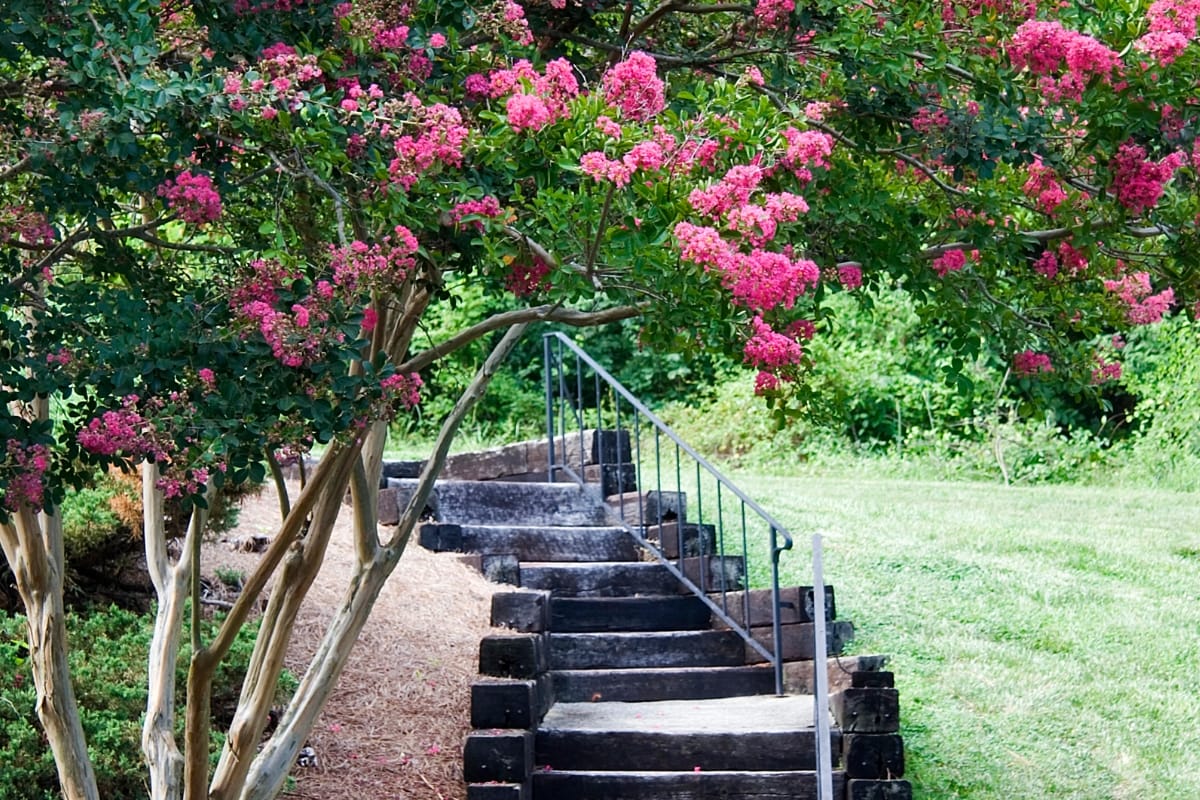Are you scratching your head, wondering why your crepe myrtles aren’t the showstoppers of your Georgiagarden? Pruning might just be the game-changer you need.
This guide will walk you through the best practices for pruning these beloved shrubs, pinpoint the perfect timing to get your shears out and steer you clear of the all-too-common snips that could harm more than help.
By diving into this read, you’ll unlock the secrets to fostering robust growth and breathtaking blooms by pruning crepe myrtles. Plus, you’ll learn how to sidestep the pitfalls that could invite pests and diseases to your plant pals. Get ready to transform your crepe myrtles into the envy of the neighborhood!
Pruning Crepe Myrtles: Tips for Healthy, Vibrant Blooms
Understanding the Importance of Proper Pruning in Georgia
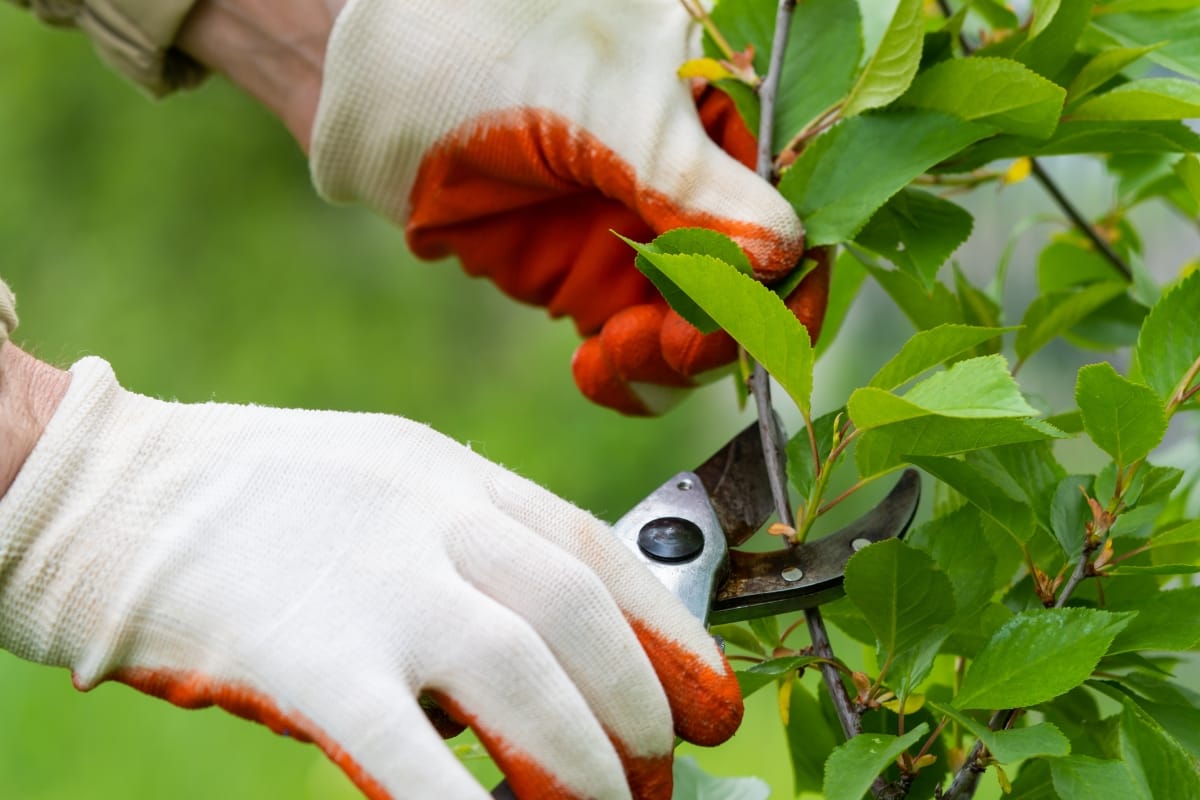
Hey there, green thumb! If you’re looking to keep your crepe myrtles (Lagerstroemia) thriving in Georgia‘s unique climate, understanding the art of pruning is key.
Not only does it boost tree health and enhance their natural beauty, but it also helps prevent issues like mildew.
An arborist‘s touch can recognize the natural growth patterns and work with them, ensuring your trees are the envy of the neighborhood. Stick around as we dive into the how-tos of pruning and the big no-nos to steer clear of.
Impact of Georgia‘s Climate on Crepe Myrtles
Hey, you’ve probably noticed how Georgia‘s humid summers and mild winters can be a mixed bag for your crepe myrtles.
This climate is a playground for fungus, especially if your trees are all bunched up. Pruning is your best defense, creating space for air to flow freely around the shoots and trunk, keeping your landscape healthy and picture-perfect.
When you’re out there in your garden, remember that the timing of your pruning matters just as much as the technique. Doing it right before spring helps your crepe myrtles bounce back and flourish.
It’s all about removing the dead or weak branches that can’t stand up to Georgia‘s weather, ensuring your trees have the strength to shoot up and bloom beautifully.
Benefits of Pruning for Tree Health and Appearance
Pruning isn’t just about keeping your lawn looking tidy; it’s a vital step in maintaining the health of your crepe myrtles. By selectively cutting back branches, you’re encouraging a stronger, more resilient tree.
This means fewer fallen leaves to rake, a robust bark that’s less inviting to pests, and roots that can better support the tree‘s growth. Think of it as a regular health check-up that keeps your crepe myrtles in top shape, ready to show off their vibrant colors and lush foliage.
Let’s talk appearance – a well-pruned crepe myrtle is a sight to behold. It’s not just about pest control; it’s about sculpting your tree to let its natural form shine through.
By removing excess growth, you’re allowing the remaining branches to flourish, resulting in a balanced, eye-catching display of leaves and flowers. And when your neighbors ask how you did it, you’ll know it’s the result of your smart pruning strategy that’s keeping your lawn‘s ecosystem thriving.
Recognizing the Natural Growth Patterns
Getting to know your crepe myrtles means understanding how they grow in Georgia‘s soil. You’ll notice that each tree has its unique pattern, with branches reaching out like arms in a dance.
Pay special attention to the branch collar – that’s the tree‘s natural defense against insects and diseases. Pruning close to, but not into, this area encourages healthy growth without exposing your tree to unwanted guests.
When you’re out there with your pruning shears, remember that your crepe myrtle’s branches are more than just wood; they’re the pathways for nutrients and water from seed to sky.
A clean cut above a bud facing the outside of the plant helps direct new growth outward, preventing tangled branches and ensuring your tree has the best chance to soak up that Georgia sunshine. It’s these little insights that make a big difference in your garden‘s vitality.
Determining the Optimal Time to Prune Crepe Myrtles
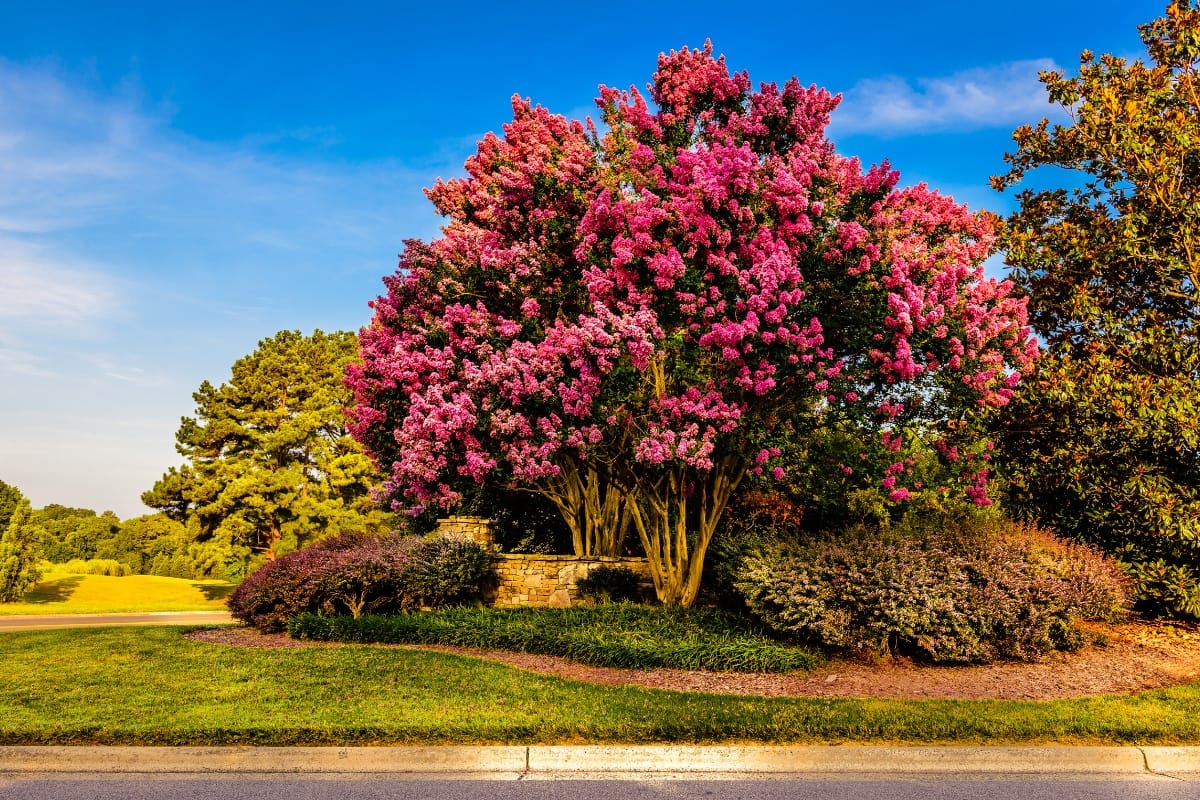
So, you’re ready to give your crepe myrtles a little trim? Spot-on timing is crucial for this ornamental plant, especially in Georgia‘s heat.
We’ll guide you through the seasonal pruning guidelines, help you spot the tell-tale signs that your tree is ready for a haircut, and consider the weather conditions that could affect your pruning success.
Whether you’re nurturing a beloved cultivar or encouraging those pollinators with a new addition, a layer of mulch and the right timing can make all the difference. Let’s get those pruning shears ready!
Seasonal Pruning Guidelines for Georgia
When it comes to pruning your crepe myrtles in Georgia, timing is everything. Aim for late winter or early spring, just before the new growth starts to bud.
This is when your trees are still dormant, making it easier to see the structure of the canopy and to avoid the sap flow that can attract pests. Plus, pruning at this time minimizes the risk of powdery mildew as the weather warms up.
Remember, your crepe myrtles are perennials, so they’ll come back stronger each year with the right care. After pruning, give them a boost with a balanced fertilizer to encourage vibrant blooms. Here’s a quick checklist to keep you on track:
- Prune in late winter or early spring before new buds form.
- Inspect the canopy to determine which branches to cut.
- Apply fertilizer post-pruning for healthy growth.
- Monitor for powdery mildew and treat promptly.
By following these seasonal guidelines, you’ll ensure your crepe myrtles have the best chance to thrive and become a stunning part of your Georgialandscape. So grab those shears and give your trees the care they deserve!
Signs That Your Tree Is Ready for Pruning
Spotting when your crepe myrtle is primed for pruning is simpler than you might think. Look for branches that have turned into woody plant skeletons, no longer playing host to the flutter of butterflies or the buzz of bees.
These are clear indicators that it’s time to grab your pruning shears and give your Lagerstroemia indica the trim it needs to channel water and nutrients to the vibrant, living parts of the tree.
Another telltale sign is the presence of crossed or rubbing branches that can create wounds and invite disease. If you see branches that are interfering with each other’s space, it’s a signal to intervene.
A strategic snip here and there not only prevents damage but also encourages your crepe myrtle to grow in a way that’s healthy and aesthetically pleasing, ensuring it remains a standout in your Georgiagarden.
Weather Conditions to Consider
When you’re gearing up to prune your crepe myrtles, keep an eye on the sky. Georgia‘s weather can be fickle, and a sudden frost after pruning can harm the new growth your trees are trying to push out.
You want to ensure the fertility of your crepe myrtles isn’t compromised by a cold snap, so it’s wise to wait until the threat of frost has passed in your hardiness zone. This way, your trees can grow without the setback of leaf spots or other cold-induced diseases.
Also, consider the humidity levels before you set out with your pruning tools. High humidity can foster disease, making your freshly pruned crepe myrtles vulnerable to infections.
If you prune when it’s too damp, you might be inviting trouble. Aim for a dry day with low humidity to give your trees the best shot at sealing off those cuts and staying disease-free. This simple timing trick can make a world of difference in the health of your landscape.
Essential Tools and Preparations for Pruning
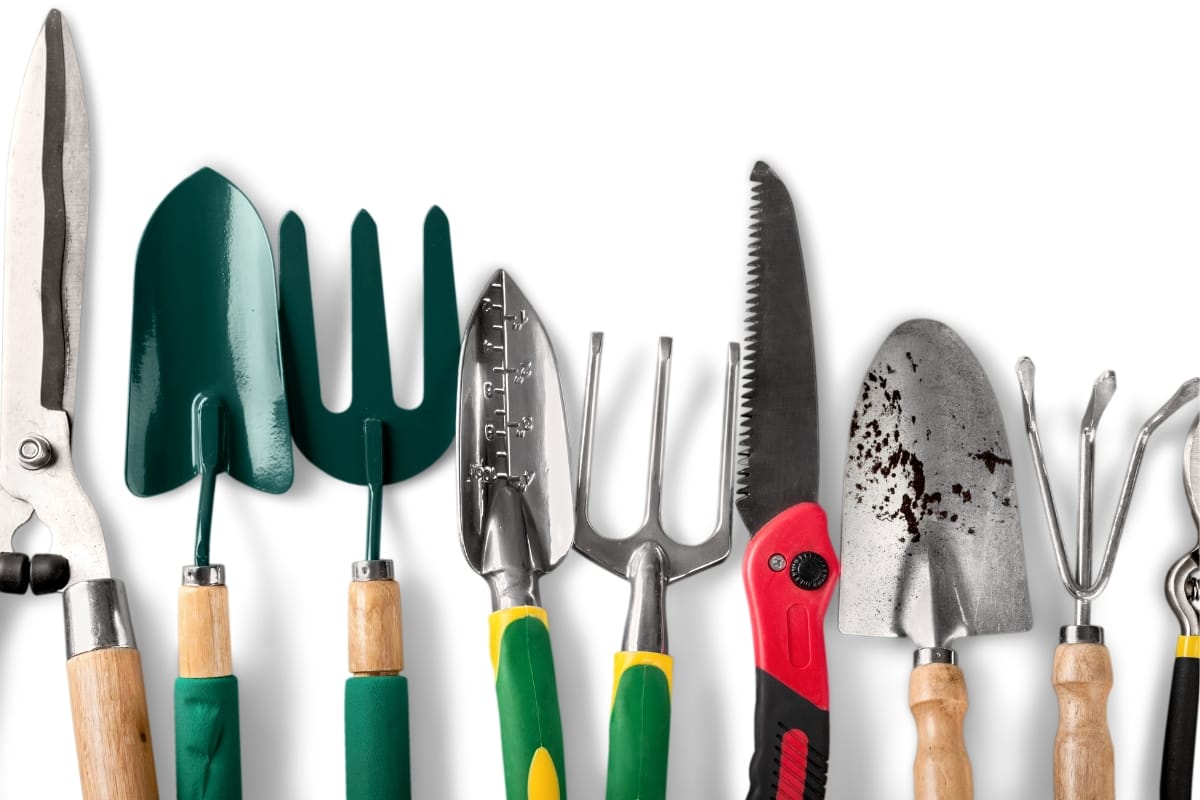
Before you start shaping your crepe myrtles into the pride of your garden, let’s get your toolkit in order.
Choosing the right pruning equipment is not just about making clean cuts; it’s about protecting your plants from pesky aphids and ensuring birds can still perch on healthy branches.
Safety is paramount, so gear up to avoid any mishaps. And don’t forget, prepping your crepe myrtle is crucial – it’s not just wood you’re cutting, it’s a living piece of your home’s agriculture.
Selecting the Right Pruning Equipment
When you’re gearing up for tree care, especially with deciduous beauties like crepe myrtles, picking the right tools is a game-changer.
You’ll want a sharp pair of pruning shears for those smaller branches, ensuring a clean cut that helps prevent sooty mold and other issues.
For the thicker, more stubborn limbs, a pruning saw or loppers will be your best friends, giving you the leverage and precision needed to maintain the tree‘s health and encourage the growth of fruit and flowers:
| Tool | Use Case | Benefit |
|---|---|---|
| Pruning Shears | Small branches | Clean cuts to prevent disease |
| Pruning Saw | Thick branches | Precision for healthy growth |
| Loppers | Medium branches | Leverage for stubborn cuts |
Remember, it’s not just about the cut; it’s about the aftercare. Once you’ve removed the unwanted branches, give your tree a fighting chance by sanitizing your tools.
This simple step can be the difference between a thriving crepe myrtle and one that’s struggling. So, clean those blades with alcohol or a bleach solution after each use, and you’ll be on your way to a garden that’s the talk of the town, free from the grip of pests and diseases.
Safety Measures to Follow Before Starting
Before you start snipping away, it’s crucial to consider your safety and the well-being of your crepe myrtles. Gear up with gloves and eye protection to shield yourself from any unexpected snaps or pokes.
And if you’re aiming to shape your tree into a haven for hummingbirds, make sure you’re pruning on a day free from frost to avoid damage to the delicate new growth that attracts these tiny visitors. It’s all about timing and protection to ensure you and your garden bask in the Georgiasunlight safely.
Remember, your crepe myrtles have a natural habit of reaching for the sky, and you’re the maestro guiding their growth. So, before you ascend that ladder, double-check its stability and your comfort with heights.
A fall could mean more than a bruised ego; it could disrupt the serene sanctuary you’ve cultivated. Keep your feet firmly planted on the ground or on sturdy rungs, and you’ll shape a landscape that’s not only safe for you but also a picturesque retreat for every fluttering wing and sun-seeking leaf.
Preparing Your Crepe Myrtle for Pruning
Before you start pruning your crepe myrtle, take a moment to assess your landscape design. You want to ensure that the natural shape of your tree complements the overall aesthetic of your garden.
If you’re dealing with the aftermath of rain or drought, give your tree some time to recover before making any cuts. This way, you’re not just snipping away; you’re making informed decisions that will enhance the health and appearance of your crepe myrtle.
Grab your loppers and get ready to work with nature, not against it. As a bit of a citizen scientist in your own backyard, observe the branches: which are thriving and which seem lackluster?
Your goal is to remove only what’s necessary, promoting robust growth that can withstand the whims of Georgia weather. By preparing your crepe myrtle with this mindful approach, you’re setting the stage for a flourishing addition to your outdoor living space.
Step-by-Step Guide to Properly Prune Crepe Myrtles
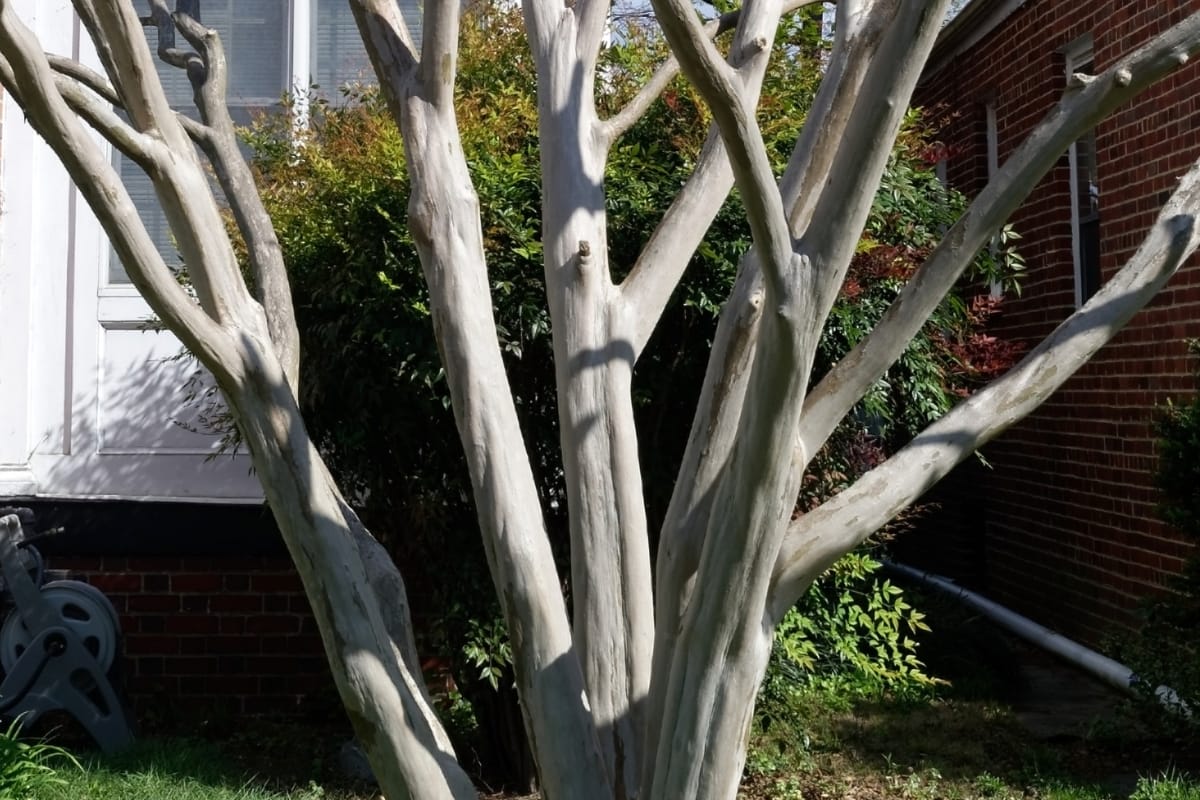
Ready to give your crepe myrtles a little TLC? Let’s roll up our sleeves and dive into pruning like a pro. We’ll tackle removing dead or diseased wood to prevent mold, thinning out excess branches for better groundcover, and shaping your tree to enhance its natural color and form.
Plus, we’ve got some nifty techniques to encourage more blooms, perfect for Georgia‘s climate and species. Follow these steps, and you’ll have a crepe myrtle that’s not just surviving but thriving.
Removing Dead or Diseased Wood
Starting with the basics, you’ll want to spot and snip off any dead or diseased wood from your crepe myrtles. This not only tidies up your evergreen beauties but also stops the spread of any issues that could compromise their health.
In Atlanta, where the mix of sun and irrigation creates a haven for your camellias and crepe myrtles alike, removing these problematic branches means your trees can focus on flourishing with the good stuff – that rich Georgiaorganic matter.
Think of it as a garden triage: you’re on the lookout for branches that don’t fit the vibrant picture of your landscape. If a branch looks like it’s had better days, it’s time for it to go.
By cutting back these parts, you’re giving your crepe myrtle the best shot at channeling its energy into new growth. Here’s your action plan:
- Identify branches that are visibly dead or show signs of disease.
- Make a clean cut to remove these branches, ensuring you don’t harm the healthy parts of the tree.
- Dispose of the removed branches properly to prevent any disease from spreading in your garden.
By tackling this step, you’re not just cleaning up; you’re setting the stage for a healthier, more resilient crepe myrtle. It’s a simple move that can lead to a lush, full canopy come blooming season.
Plus, you’re helping to maintain the natural irrigation flow within the tree, which is key to keeping those roots happy and your garden thriving.
Thinning Out Excess Branches
Thinning out excess branches from your crepe myrtles is like decluttering your yard, giving each plant its moment to shine. If you’ve got branches thicker than the diameter of a pencil crowding each other out, it’s time to open up the canopy.
This practice not only prevents disease by improving air circulation, but also enhances your tree‘s overall form, making it a standout in any United Statesgarden.
Imagine your crepe myrtle as a canvas in your landscape, and you’re the artist deciding where to trim to create the perfect view. By removing select branches, you’re reducing the need for pesticide use and encouraging stronger, healthier growth. It’s a simple yet impactful way to ensure your crepe myrtles remain resilient and beautiful throughout Georgia‘s seasons.
Shaping the Tree Without Harming It
When you’re shaping your crepe myrtles, think of the guidance from the United States National Arboretum: work with the tree‘s natural form.
You’re aiming for a shape that not only withstands the wind but also showcases that stunning autumn leaf color. It’s about striking a balance, creating a living sculpture that doesn’t just act as a hedge but stands as a testament to your garden‘s hardiness.
Remember, your goal is to enhance, not to overhaul. Gentle cuts here and there can guide your crepe myrtle to its full potential without causing undue stress.
By pruning with a light hand, you’re helping your tree brace against the elements and enter the cooler months with a robust structure, ready to dazzle with vibrant colors when the season turns.
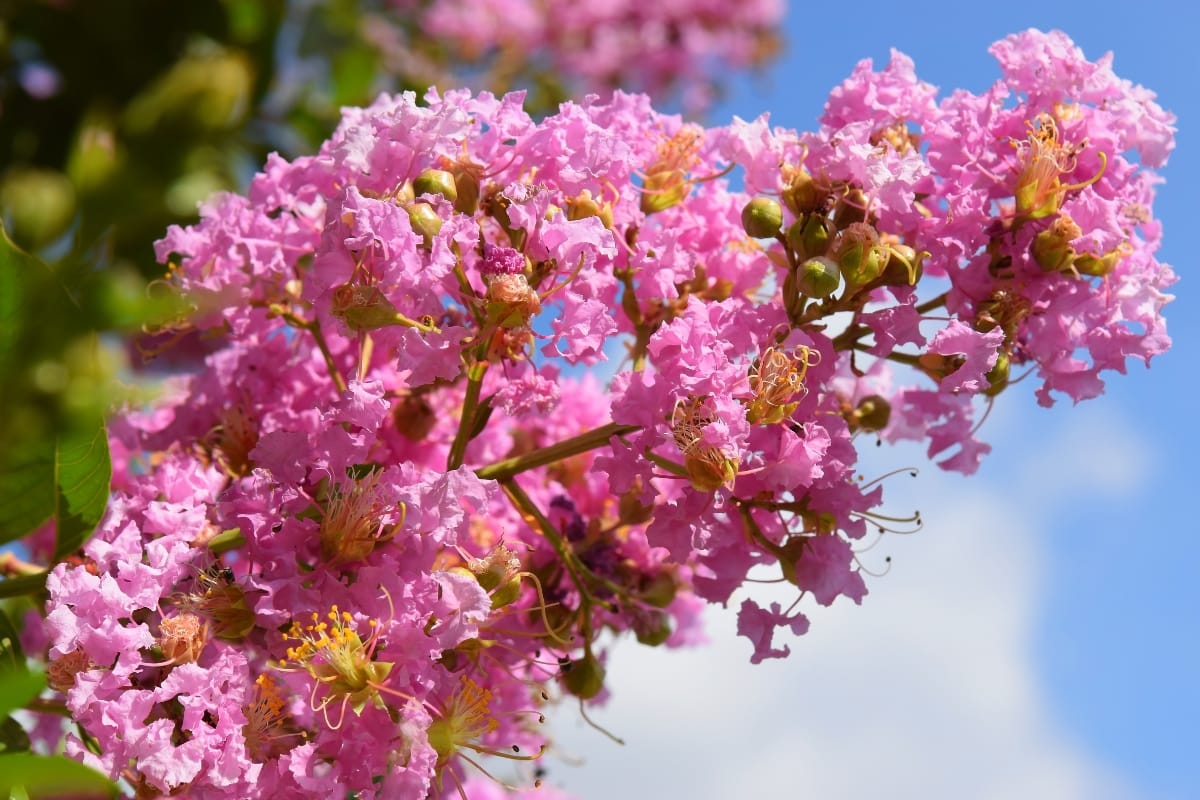
Techniques to Encourage More Blooms
Hey, if you’re aiming for a show-stopping bloom from your crepe myrtle tree, pruning is your secret weapon.
Thinning out the canopy creates the space needed for sunlight and air to reach the inner branches, which is crucial for those eye-catching autumn displays. Keep the soil pH balanced and the branches well-spaced, and you’ll set the stage for a spectacular flowering season that’ll have the whole neighborhood talking.
When you’re getting down to crepe myrtle tree pruning, remember it’s all about timing and technique. Prune in late winter to stimulate new growth where those vibrant blooms will emerge.
By cutting back just above the outward-facing buds, you encourage a flush of flowers that’ll turn heads come bloom time. Trust us, with a bit of care and know-how, your crepe myrtles will be the envy of Georgia‘s gardens.
You’ve mastered the art of pruning crepe myrtles. Let’s now steer clear of the blunders that could undo your hard work.
Common Pruning Mistakes to Avoid
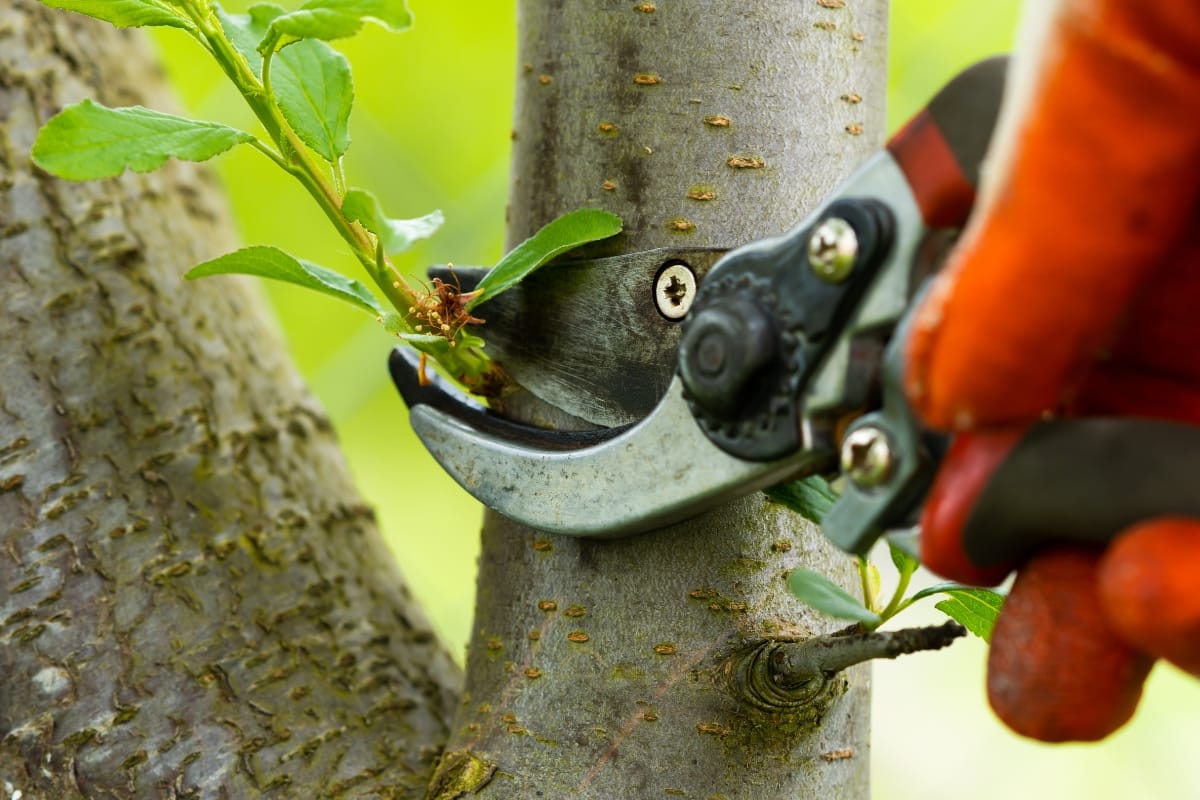
As you gear up for trimming crepe myrtles, it’s crucial to sidestep common pitfalls that could hinder their splendor.
Understanding the consequences of topping, avoiding the drawbacks of over-pruning, and clearing up misconceptions about pruning practices are key chapters in your crepe myrtle care book.
Whether you’re deciding when to trim crepe myrtle or pinpointing the best time to trim crepe myrtles, these insights will ensure your trees flourish. Let’s dive into what not to do, so you can prune with confidence and keep your crepe myrtle trees in peak condition.
Understanding the Consequences of Topping
When you’re figuring out how to trim a crepe myrtle, you might hear about topping – but trust me, it’s a no-go. Topping, the harsh cutting back of a tree‘s branches to stubs, can lead to weak new growth and a less hardy tree.
It’s a shortcut that might seem like a quick fix when you’re eager to see how to prune a crepe myrtle tree, but it can actually stress your tree and make it more susceptible to pests and diseases, not to mention it can ruin the natural beauty of your crepe myrtles.
So, when to prune crepe myrtle without causing harm? The best time is late winter, before spring growth kicks in. Avoid topping at all costs; instead, focus on pruning crepe myrtles with care, removing only the necessary branches to maintain their health and structure.
This approach encourages stronger, more beautiful growth and ensures your crepe myrtles remain a stunning feature in your Georgialandscape for years to come.
Avoiding Over-Pruning and Its Effects
When you’re figuring out how to prune a crepe myrtle, it’s tempting to go clip-happy, but hold those shears steady! Over-pruning can strip away too much of the tree‘s canopy, leaving it vulnerable and stunting its growth. T
he best time to prune crepe myrtles is late winter, just before the spring growth spurt. This timing allows for proper crepe myrtle pruning without the risk of cutting away next season’s blooms or causing undue stress to the tree.
So, how do you trim crepe myrtles without going overboard? Start by identifying the branches that truly need removal—those that are dead, diseased, or crossing. Then, follow the rule of thumb: never remove more than one-third of the tree‘s branches in a single season.
This approach to how and when to prune a crepe myrtle ensures you’re promoting healthy growth while maintaining the tree‘s structural integrity. Here’s a quick reference to keep your pruning on track:
| Action | Reason | Outcome |
|---|---|---|
| Identify necessary branches for removal | Prevent over-pruning and stress | Healthier tree with proper growth |
| Prune in late winter | Optimal timing for recovery and bloom | Robust blooms and vigorous spring growth |
| Limit pruning to one-third of branches | Maintain structural integrity | Strong, well-shaped crepe myrtle |
Misconceptions About Pruning Practices
One common misconception about pruning crepe myrtles is that it’s a one-size-fits-all task, but that’s far from the truth. When you’re figuring out how and when to prune crepe myrtle, it’s crucial to consider the tree‘s specific needs and growth pattern.
Overdoing it can lead to a weak structure and fewer blooms, so remember, how and when to trim a crepe myrtle should be based on the tree‘s health and the season’s timing, not just a routine calendar check.
Another myth you might encounter is the belief that heavy pruning will invigorate your crepe myrtle, but in reality, this can do more harm than good. If you’re asking, “How do I prune a crepe myrtle?” the answer isn’t to cut it back aggressively.
Instead, focus on thoughtful trimming that maintains the tree‘s form and vitality. Knowing how and when to trim crepe myrtle involves careful observation and a gentle touch, ensuring your tree remains a robust, blooming beauty in your Georgiagarden.
Now that you’ve learned what not to do, let’s nurture what’s left. Proper care after pruning sets the stage for robust growth and health.
Post-Pruning Care for Healthy Growth
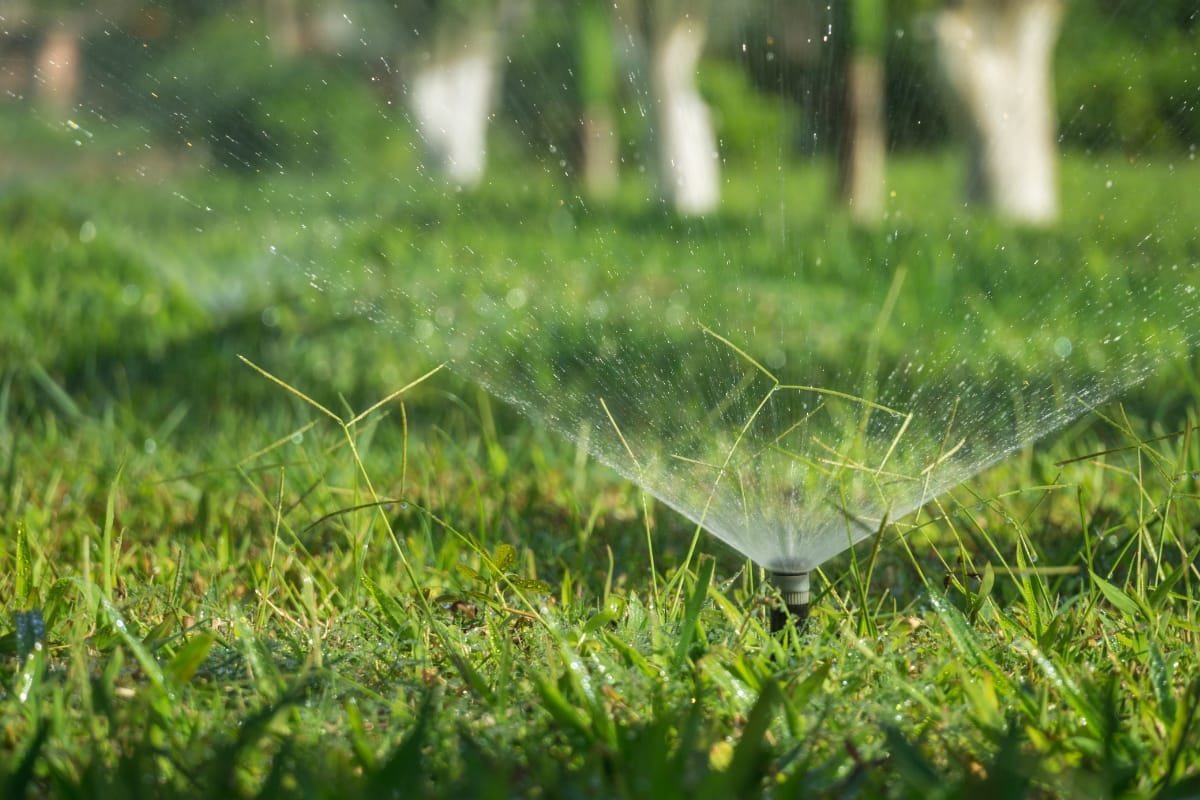
Now that you’ve mastered how to prune crepe myrtles, let’s ensure they bounce back stronger than ever. Providing your trees with adequate water and nutrients, keeping an eye out for any signs of stress or disease, and planning your future pruning sessions are crucial steps to maintain their health and beauty.
Whether you’re wondering “how do I prune crepe myrtles?” or “how do you prune a crepe myrtle?” these post-pruning care tips will guide you towards a flourishing garden.
Providing Adequate Water and Nutrients
After you’ve pruned your crepe myrtles, it’s time to quench their thirst and feed them well. A consistent watering schedule helps them recover and grow strong, especially during Georgia‘s hot summers.
And don’t skimp on the nutrients; a balanced fertilizer can work wonders, encouraging lush foliage and vibrant blooms that’ll make your neighbors do a double-take.
Think of your crepe myrtles as athletes who’ve just gone through a workout – they need hydration and a good meal to bounce back. So, give them a deep soak to reach those roots and follow up with a nutrient-rich meal. This one-two punch of water and fertilizer will help your trees heal from pruning and gear up for a season of stunning growth.
Monitoring for Signs of Stress or Disease
After you’ve pruned your crepe myrtles, keep a close eye on them for any signs of stress or disease. If you notice leaves turning yellow or branches wilting, it could be a cry for help.
These symptoms often point to issues like root rot or fungal infections, which can sneak up after pruning. Quick action is your best bet, so don’t hesitate to provide extra care or seek advice to nip these problems in the bud.
It’s also smart to watch for pests that might see your freshly pruned crepe myrtles as an open invitation. Aphids, scale insects, and other critters love to take advantage of vulnerable trees.
If you spot any unusual activity, like sticky residue on leaves or a sudden lack of blooms, it’s time to investigate and possibly treat your trees to protect their health and ensure they continue to thrive in Georgia‘s climate.
Planning for Future Pruning Sessions
After you’ve given your crepe myrtles a good prune, it’s smart to pencil in your next pruning session. By planning ahead, you can avoid the rush and stress of unexpected garden chores.
Aim for late winter each year, as this is the sweet spot for crepe myrtles in Georgia, allowing them to heal and burst into bloom when the time is right.
Keep a garden journal or set a reminder on your phone to track your pruning activities. This way, you’ll have a clear record of what you’ve done and what needs doing, ensuring your crepe myrtles get consistent care. Plus, you’ll be able to spot patterns and tweak your approach for even better results next season, keeping your garden‘s showstoppers in tip-top shape.
Frequently Asked Questions
Why is proper pruning crucial for crepe myrtles in Georgia?
Proper pruning maintains the health and bloom quality of crepe myrtles in Georgia, preventing disease and encouraging vibrant growth in our climate.
When is the best time to prune crepe myrtles?
The ideal time to prune crepe myrtles is in late winter, before they break dormancy and new growth begins.
What tools do I need for pruning crepe myrtles?
Pruning crepe myrtles requires sharp bypass pruners for small branches, loppers for medium limbs, and a pruning saw for larger growth.
How do I prune crepe myrtles correctly?
Prune crepe myrtles in late winter by removing weak branches and retaining the tree‘s natural shape, avoiding heavy “topping” to ensure healthy growth and blooming.
What are the common mistakes to avoid when pruning?
Pruning mistakes often include cutting too close to the trunk, over-pruning, ignoring diseased limbs, and wrong timing, which can harm plant health and growth.
Pruning Crepe Myrtles for Vibrant Blooms and Healthy Growth
Properly pruning crepe myrtles not only enhances their natural beauty but also ensures healthy growth for years to come. Avoid common mistakes by trusting the experts at Glover Landscapes to handle all your pruning and landscaping needs.
With our professional touch, your yard will thrive in every season. Call us today at (404) 510-6437 or request a free estimate for your next landscaping project. Let us help you create the outdoor space of your dreams!
